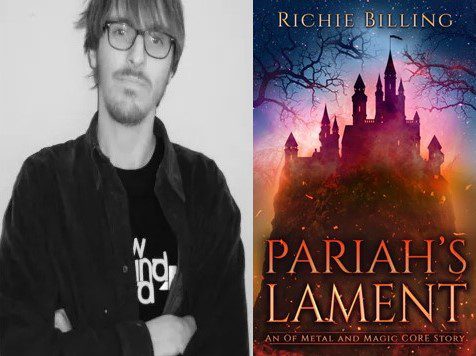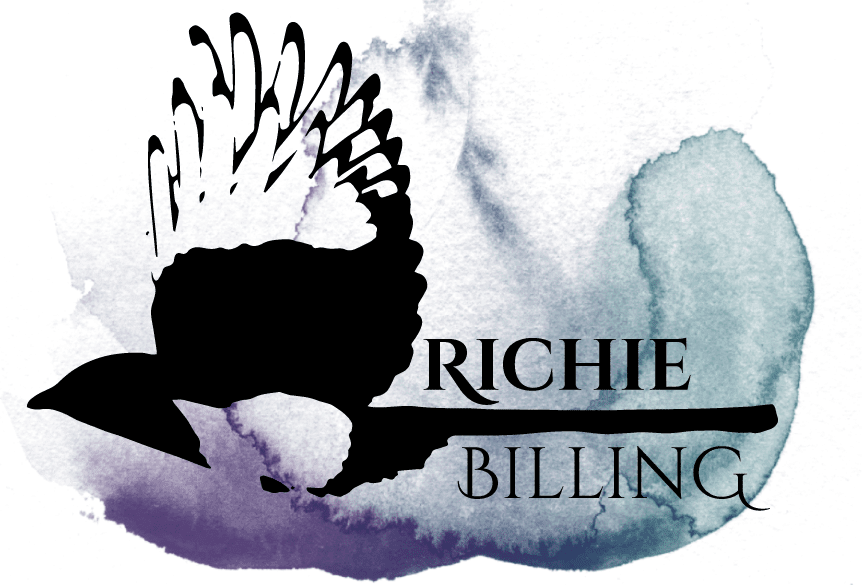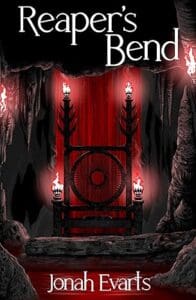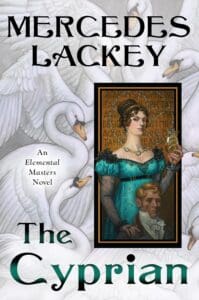
About Richie Billing
Richie Billing writes fantasy fiction, historical fiction and stories of a darker nature. His short fiction has been published by, amongst others, Kzine, TANSTAAFL Press, Bewildering Stories, Liquid Imagination, The Magazine of History & Fiction, Aether and Ichor, and Far Horizons.
His debut novel, Pariah’s Lament, will be published by Of Metal and Magic Publishing on 17th March 2021. He co-hosts the podcast The Fantasy Writers’ Toolshed, a venture inspired by the requests of readers of his critically-acclaimed book, A Fantasy Writers’ Handbook.
Most nights you can find him up into the wee hours scribbling away or watching the NBA. Find out more at www.richiebilling.com.
On Writing
Writing a novel is a challenging beast. Writing a fantasy novel, however, is more of a giant fire-breathing, bone-crushing hideosity of a beast.
Why? Because we have so much to do to bring it altogether. From worldbuilding to developing magic systems, unique races and weapons, plus all of the usual storytelling elements like characterization, conflict and theme, it can truly boggle the mind.
And this makes the prospect of writing as appealing as a date with Medusa. Part of the reason is because where do you even start with all of this? What should you focus on? What’s the very best way to tell this tale?
How can we make things easier for ourselves?
Something that’s helped me an awful lot is to narrow my focus. With so much to potentially include, it can help you massively in all facets of the story writing process to identify a focus for your story.
Is this going to be character driven? Plot driven? Constructed to illustrate a theme? Is it going to explore a new fantasy world in depth?
In the past I’ve always leaned toward plot driven storytelling. When I think back to some of my favourite fantasy books and movies, the big events always stick out. The sieges, the great battles, heroic acts. They’re the epic plot points I wanted my stories to have.
But when it came to writing Pariah’s Lament, I took a different tact.
Why Write A Character-Driven Story?
Debates like character-driven vs plot-driven storytelling have raged for decades. It can be hard to figure out which side to believe. Truth is, neither are wrong. It all comes down to the story you want to tell.
Not long ago I carried out some research on the reasons behind why people give up reading books. Weak characters came out on top.
Character-driven fantasy is the flavour of the month at the moment. Fantasy series like A Song of Ice and Fire, The Kingkiller Chronicles and the Riftwar Cycle rely on characters to drive the story.
And it’s bonds with these characters that readers love to forge. They will follow them to hell and back.
And that means they’ll tear through the pages to see what happens to them. As writers, isn’t that what we all want? Readers loving our creations?
But it’s easier said than done. Creating wonderfully charismatic characters like Kote, Pug, Arya, Dany and Tyrion takes serious craft.
But it’s not beyond any of us. In fact, we can quite easily learn how to do it here and now.
A Character-Driven Case Study
One way to figure out how to write compelling characters is to simply analyse some of our favourite characters in fiction. Start with some simple questions.
- What draws you to them?
- At what point did you decide you liked them?
- What exactly do you like about them?
- How would you feel if harm befell them and why?
- What about them intrigues you?
- What about them do you want to learn or understand?
Now we may have to go back and reread our favourite books or watch our favourite movies or shows, but when we do so it’s important to think about your reactions to what these characters say and do. Make notes. Highlight lines. And to help bring clarity, try compiling a case study of sorts.
You could use key features about them as titles, like appearance, behaviour and actions, attitudes, secrets or hidden truths, dialogue, attitude of others toward them, skills, motivations and goals.
All of those insights can help you understand why characters are likeable. And then you can apply it to your own.
The Causal Relationship Between Character, Conflict and Plot
One of the main influencers in my decision to take a character-driven approach to writing Pariah’s Lament was my changing understanding of storytelling.
Not long before I set out to write the novel I became immersed in The Art of Dramatic Writing by Lajos Egri. Everything just seemed to make so much sense after reading it. And it’s Egri’s approach to character, conflict and plot that I decided to follow.
This method is built upon an in-depth understanding of our characters—referred to as the bone structure. Who they are, what they want, what drives them. As Egri says, it’s one thing to know what a character wants for breakfast and another to understand why they want it.
Once we understand our characters, we can get a better sense of how they’ll react to and deal with conflicts and obstacles that stand in their path to getting their wants and desires. They may lack the abilities needed to overcome an obstacle and fail. And then our plot may take us on a path of growth and development.
So when it comes to introducing those plot points we enjoy so much—battle scenes, for instance—we’ll know how our characters will fare, what they’ll do when faced with danger and the means by which they’ll cunningly defy death. Or maybe not…
How characters react in moments of conflict can dictate the direction of your plot and you never know, they may take you on unexpected turns which readers may love.
This all spurred me to come up with my own approach…
Character Plotting
This is essentially a combination of my two favorite approaches to storytelling. Out with the character-driven vs plot-driven malarkey.
So what is character plotting exactly? Well, it’s all to do with character development.
Just like you’d map out the plot points of a story, I map out the character’s development as they interact with those plot points. Is the outcome positive or negative? What impact does that subsequently have on the character?
Above all, this approach focuses on the emotional story of your character. The peaks and troughs of their mood. How they react emotionally to the conflicts and obstacles that litter their path.
Focusing on this emotional journey is, I’ve come to find, vital when writing a character-driven story. Consider this quote by Moses Malevisnky:
“Emotion, or the elements in or of an emotion, constitute the basic things in life. Emotion is life. Life is emotion. Therefore emotion is drama. Drama is emotion.”
When we think about our lives and what compels us to act, it’s our emotions that propel us. What we feel like doing in a given moment, whether we succumb to rising anger, lust or rage, can sway us to do things that we may never have believed ourselves capable of.
As we meander our way through long stories, we can easily lose the emotional threads, and that’s why I’ve found character plotting so useful. Read more about it here.
Examples of Character-Driven Novels
It’s always helpful to turn to a few examples for guidance. Below, you can find a short list of character-driven fantasy novels, as well as links to help you find more.
- The A Song of Ice and Fire series by George RR Martin
- Name of the Wind by Patrick Rothfuss
- Assassin’s Apprentice by Robin Hobb
- Half A King by Joe Abercrombie
- A great discussion on Reddit’s r/fantasy about character driven fantasy books
- A list on Goodreads of hundreds of character driven fantasy books
More Guides On How To Write Character-Driven Stories
Thank you for checking out this guide on character-driven stories. There’s so much to learn and I’ve linked to a few other resources in the text above. Below, you can find some more that you may find useful.
- What is characterization? A detailed guide on crafting characters
- 5 mistakes men can make when writing women characters
- A guide on how to plot a story





Leave a Reply